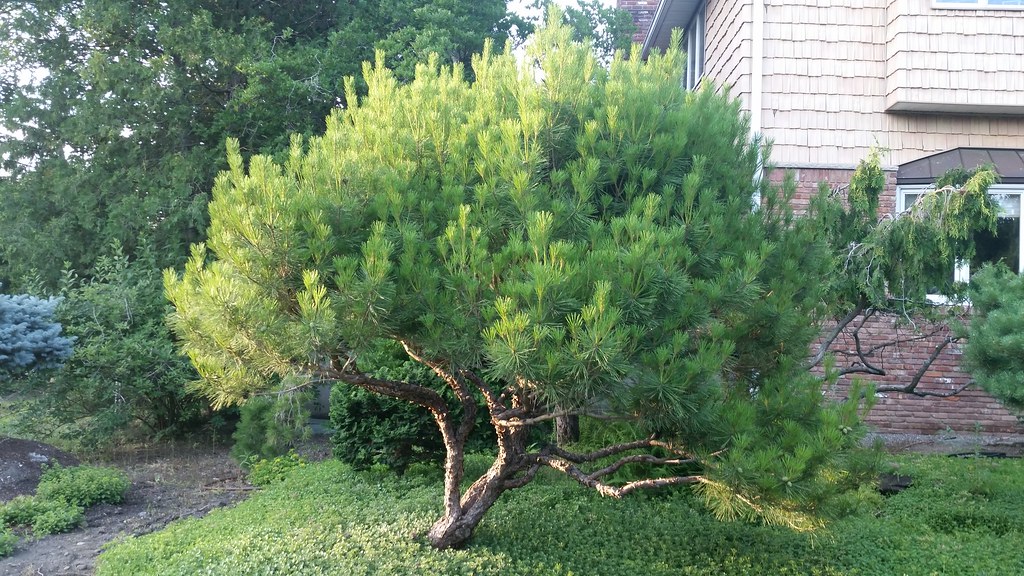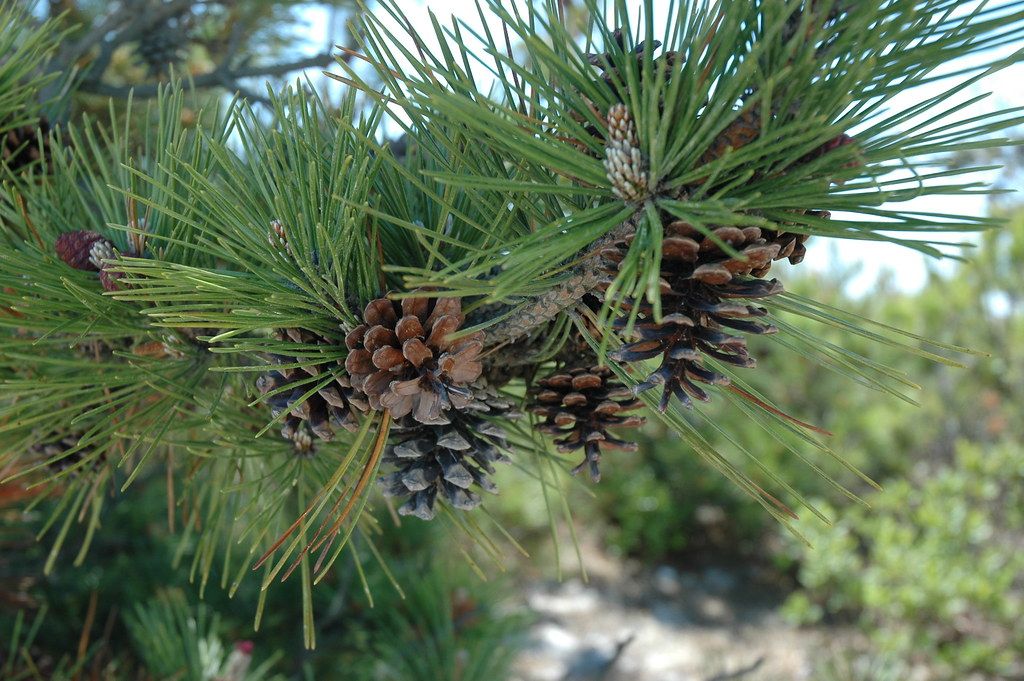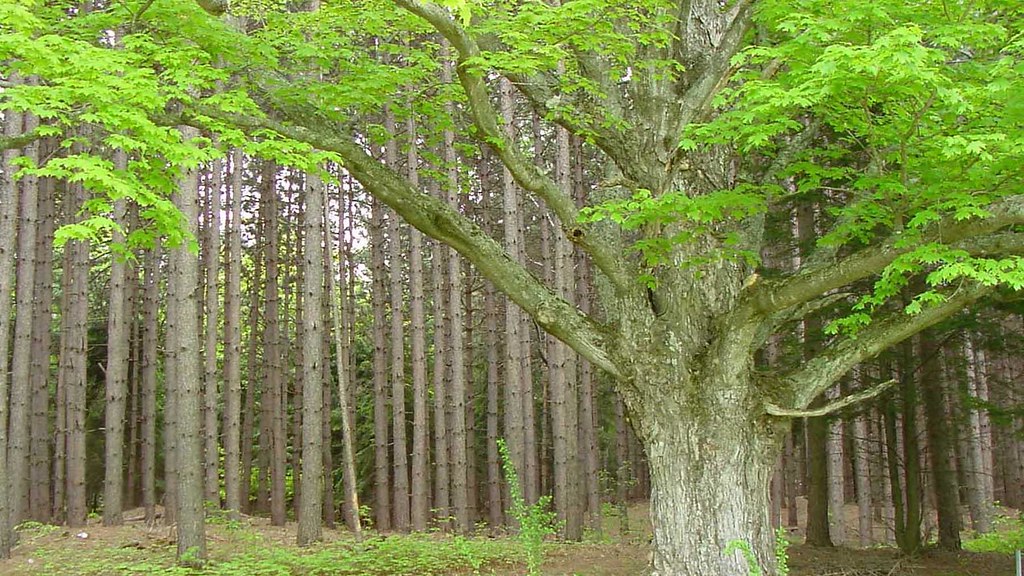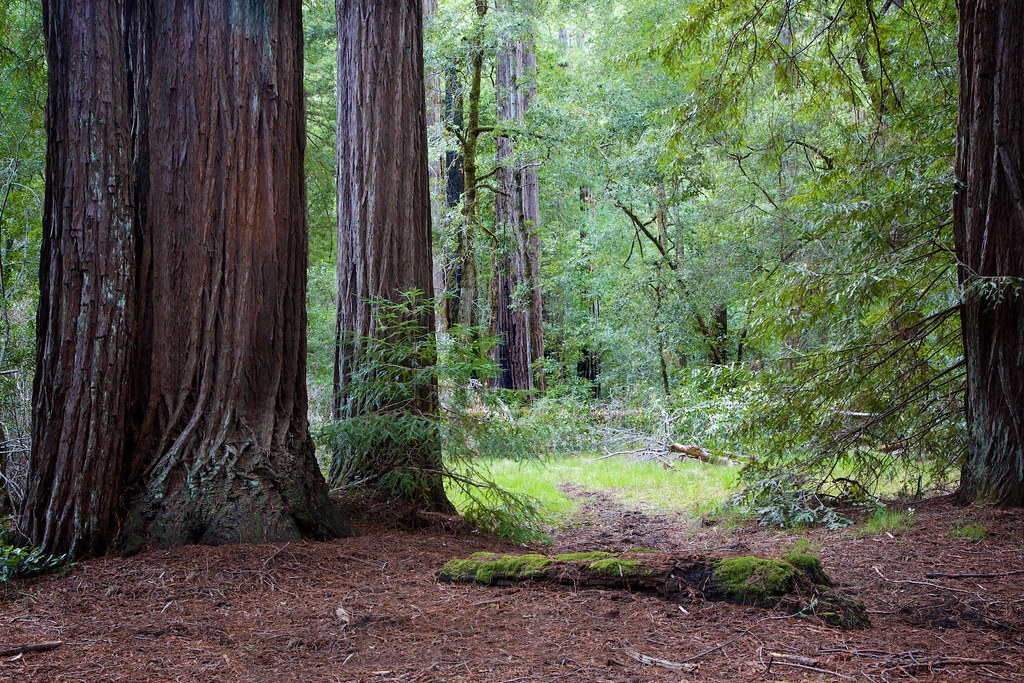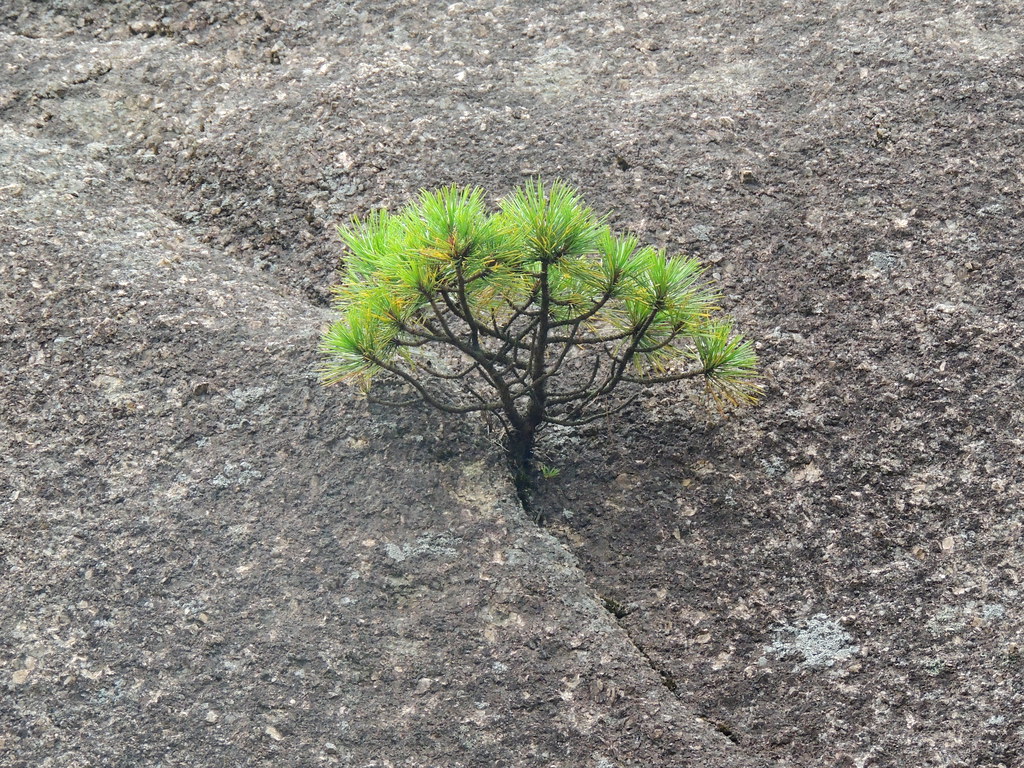When it comes to adding a touch of elegance and natural beauty to your garden, hostas are often at the top of the list. These luscious, shade-loving perennials are beloved for their striking foliage and low-maintenance requirements.
However, if you happen to have pine trees casting their shade in your garden, you might wonder whether hostas can thrive in such conditions. In this article, we’ll explore the fascinating world of hostas and their compatibility with pine trees. So, if you’re eager to create a harmonious garden landscape, keep reading.
Pine trees are a common sight in many yards and gardens. They are easy to grow and provide shade and privacy. But what if you want to add color and life to your pine tree landscape?
Here are some of the best plants to grow under pine trees:
1. Ginger (Zingiber officinale)
Ginger is a tropical plant that thrives in the shade and can be a great addition to your garden under pine trees. Here are some benefits of growing ginger under pine trees:
- Natural pest repellent: Ginger contains compounds that repel pests, helping protect your garden from unwanted insects.
- Improves soil quality: Ginger has the ability to enhance soil health by reducing soil erosion and promoting nutrient absorption.
- Adds fragrance: The aroma of ginger can permeate the air, creating a pleasant and refreshing atmosphere in your garden.
Some tips for successful growth of ginger under pine trees include:
- Well-draining soil: Make sure the soil has good drainage to prevent waterlogging, as ginger does not thrive in waterlogged conditions.
- Partial shade: While ginger can tolerate shade, it still requires some sunlight. Choose a spot under your pine trees where it can receive a few hours of filtered light.
- Regular watering: Keep the soil consistently moist but not soggy. Water ginger plants when the top inch of soil feels dry.
For more information on the health benefits and cultivation of ginger, you can refer to its Wikipedia page.
These tropical plants will add beauty and diversity to your garden, creating a lush and vibrant atmosphere under your pine trees. Experiment with different combinations and enjoy the unique charm they bring to your outdoor space!
2. Orchids (Orchidaceous family)
Orchids are beautiful tropical plants that can add a touch of elegance to any garden, even under pine trees. Here are some varieties of orchids that are suitable for the pine tree environment:
Varieties of Orchids suitable for pine tree environment
Cymbidium: These orchids are known for their stunning flowers and can tolerate shade and cooler temperatures under pine trees.
Dendrobium: These orchids come in a range of colors and can thrive in the filtered light provided by pine trees.
Paphiopedilum: Also known as the “Lady Slipper” orchid, these plants are well-suited for growing under pine trees due to their ability to tolerate lower light levels.
Caring for Orchids under shade
When growing orchids under pine trees, it’s important to provide them with the appropriate care. Here are some tips to keep in mind:
- Light: Orchids need filtered or indirect light, so the dappled shade beneath pine trees is ideal. Avoid placing them in direct sunlight, as this can scorch their leaves.
- Watering: Orchids prefer moist but well-draining soil. Water them regularly, but allow the soil to partially dry out between waterings to prevent root rot.
- Fertilizer: Use a balanced orchid fertilizer to provide essential nutrients. Be sure to follow the recommended dosage and schedule for best results.
- Temperature: Orchids thrive in temperatures between 60°F (15°C) and 80°F (27°C). The cooler temperatures under pine trees can create a suitable environment for them.
- Humidity: Orchids love humidity, so misting their leaves or placing a tray of water nearby can help create a more humid microclimate.
By following these care tips, you can successfully grow beautiful orchids under the shade of your pine trees. Remember to monitor their growth and make any necessary adjustments to ensure their health and vitality.
For more information about orchids and their care, you can visit the Orchidaceae family page on Wikipedia.
3. Hostas (Hosta plantaginea)
Features of Hostas
Hostas, scientifically known as Hosta plantaginea, are versatile and visually appealing plants that thrive in shady areas. These plants are known for their large, broad leaves that come in various shades of green, blue, and variegated patterns. They also produce delicate, trumpet-shaped flowers that bloom in summer, adding a touch of beauty to any garden. Hostas are low-maintenance plants that can enhance the aesthetics of any landscape with their lush foliage.
Growing Hostas under pine trees
Growing hostas under pine trees can be a great way to utilize the shaded areas created by the trees. Here are some important considerations for successfully growing hostas under pine trees:
- Choose the right hosta varieties that are tolerant of shade and can handle the acidic soil often found under pine trees. Some recommended varieties are Hosta ‘Love Pat’, Hosta ‘France’, and Hosta ‘Patriot’.
- Prepare the soil by removing any debris, pine needles, or competing vegetation. Hostas prefer well-draining soil, so it may be necessary to amend the soil with organic matter like compost.
- Plant hostas in areas that receive some dappled sunlight throughout the day. While they thrive in shade, a small amount of sunlight is beneficial for their growth and flowering.
- Water hosts regularly, especially during periods of drought. The soil shouldn’t be allowed to dry out completely, but it’s important not to overwater as well.
With their ability to thrive in shade and add beauty to garden spaces, hostas are an excellent choice for landscaping under pine trees. Remember to choose the right hosta varieties, prepare the soil adequately, and provide regular care to ensure their success.
For more information about hostas, you can visit this Wikipedia page.
4. Bird of Paradise (Strelitzia reginae)
The Bird of Paradise, scientifically known as Strelitzia reginae, is a tropical plant that adds a touch of exotic beauty to any garden. Here are some features and the suitability of growing Bird of Paradise under pine trees:
Features of Bird of Paradise
– The Bird of Paradise gets its name from its unique flower resembling the shape of a bird in flight.- It has large, vibrant orange or blue flowers that bloom from late winter to early spring.- The plant has long, leathery leaves that resemble banana leaves.- It can grow up to 5 feet tall and 3 feet wide, creating an impressive focal point in the garden.
Suitability for growing under pine trees
– Bird of Paradise is a hardy plant that can tolerate a variety of conditions, including shade.- Pine trees provide filtered sunlight, which is ideal for the Bird of Paradise as it prefers partial shade.- The acidic soil under pine trees is also suitable for this tropical plant.- However, it is essential to ensure proper drainage, as pine trees can create acidic and dense soil.
Growing Bird of Paradise under pine trees can create a tropical oasis in your garden. With its stunning flowers and unique foliage, this plant adds color and interest to any landscape. So, if you have a pine tree in your garden and want to add some tropical flair, consider planting the Bird of Paradise
5. Bromeliads (Bromeliaceae family)
Bromeliads are a beautiful and diverse group of plants that thrive in tropical climates. They are known for their unique rosette-shaped leaves and vibrant flowers, making them a perfect addition to any garden or landscape. Here are some types of bromeliads that are great to grow under pine trees:
Types of Bromeliads
- Neoregelia: Neoregelia bromeliads are known for their vibrant foliage colors, including shades of green, red, purple, and orange. They are easy to grow and can tolerate a wide range of light conditions, making them suitable for growing under pine trees.
- Guzmania: Guzmania bromeliads are popular for their bright and showy flowers. They come in a variety of colors, including red, orange, yellow, and pink. These bromeliads prefer partial shade and high humidity, making them a great choice for growing under pine trees.
Growing conditions and care tips
- Light: Bromeliads generally prefer bright, indirect light. When growing under pine trees, they may receive filtered light due to the dense foliage. Make sure to choose bromeliads that can tolerate low to medium light conditions.
- Watering: Bromeliads have specialized structures called “tanks” or “cups” that collect and hold water. It’s important to keep this tank filled with water, as bromeliads absorb moisture through their leaves. However, avoid overwatering, as it can lead to root rot. Water the plants when the top inch of the soil feels dry.
- Soil: Bromeliads prefer well-draining soil. Use a mixture of orchid bark, sphagnum moss, and perlite to create a well-draining potting mix.
- Fertilizer: Bromeliads have relatively low nutrient requirements. Use a balanced, water-soluble fertilizer diluted to half-strength during the growing season (spring and summer). Avoid fertilizing during the winter months.
- Temperature and humidity: Bromeliads thrive in warm and humid conditions. Pine trees can provide some shade and protection from strong winds, creating a microclimate that is suitable for bromeliads.
By adding bromeliads to your garden under pine trees, you can create a beautiful and tropical atmosphere. Their unique foliage and vibrant flowers will add a pop of color and interest to your outdoor space.
To learn more about bromeliads and their different species, you can visit Wikipedia‘s page on the Bromeliaceae family.
6. Elephant Ear (Colocasia esculenta)
Elephant Ear, scientifically known as Colocasia esculenta, is a tropical plant that adds a touch of exotic beauty to any garden. Here are some key characteristics of this stunning plant:
- Large, heart-shaped leaves that resemble elephant ears.
- Rich, glossy green foliage that provides a bold and dramatic look.
- Can grow up to 3-5 feet tall, creating a striking presence in the garden.
- Prefers moist soil and thrives in partial shade.
Thriving under pine tree shade
One of the unique qualities of Elephant Ear is its ability to thrive in the shade of pine trees. The filtered sunlight and acidic soil conditions created by pine trees make it an ideal environment for this tropical plant. By planting Elephant Ears under pine trees, you can create a beautiful and lush garden oasis even in areas with limited sunlight.
So, if you have pine trees in your garden and are looking for a tropical plant to add interest and color to the shaded areas, Elephant Ear is a great choice. Its vibrant foliage and ability to adapt to different soil conditions make it a versatile option for any garden.
7. Ferns (Filicopsida class)
Different types of Ferns to consider
If you have pine trees in your garden and are looking for tropical plants that can thrive under their shade, ferns are an excellent choice. Ferns are a diverse group of plants known for their elegant fronds and ability to grow in low-light conditions. Here are some ferns to consider:
- Nephrolepis exaltata(Boston Fern): This popular fern features arching fronds that add a touch of elegance to any space.
- Adiantum raddianum(Maidenhair Fern): Known for its delicate, lacy foliage, this fern adds a graceful touch to shaded areas.
- Platycerium bifurcatum(Staghorn Fern): This unique fern has antler-like fronds that attach to tree trunks or hang in baskets.
- Davallia fejeensis(Rabbit’s Foot Fern): With furry, creeping rhizomes, this fern adds a whimsical charm to any garden.
Ideal conditions for Fern growth
To ensure the successful growth of ferns under pine trees, it is essential to provide them with the right conditions. Here are the ideal conditions for fern growth:
- Shade: Ferns thrive in shady areas and are well-suited for growing under pine trees, which provide ample shade.
- Moisture: Ferns prefer humid conditions and require regular watering to keep the soil consistently moist.
- Well-draining soil: Ferns prefer soil that is well-draining and rich in organic matter. Adding compost or peat moss to the soil can help improve drainage and fertility.
- Air circulation: Ensuring proper air circulation around ferns can prevent fungal diseases and promote healthy growth. Pruning nearby branches or thinning out the pine tree canopy can improve air circulation.
By selecting the right fern species and providing them with the ideal growing conditions, you can create a lush and tropical garden under the shade of your pine trees.
For more information on ferns and their cultivation, you can visit this article on ferns on Wikipedia.
8. Philodendrons (Philodendron genus)
Benefits of Philodendrons under pine trees
Philodendrons are tropical plants that thrive in the shade, making them an excellent choice to grow under pine trees. Here are some benefits of growing philodendrons under pine trees:
- Natural ground cover: Philodendrons have broad, lush leaves that can provide a beautiful ground cover under pine trees, adding texture and color to the understory.
- Moisture retention: The thick foliage of philodendrons helps to retain moisture in the soil, which is beneficial for pine trees as they prefer moist conditions.
- Protection from the sun: Pine trees can create dappled shade, which is perfect for philodendrons as they prefer indirect sunlight. Growing them under pine trees helps shield them from intense sunlight, preventing leaf burn.
- Low maintenance: Philodendrons are known for their resilience and ability to thrive in a variety of conditions. Once established, they require minimal maintenance.
Types of Philodendrons to choose from
There are several types of philodendrons to choose from when planting under pine trees. Here are a few popular ones:
- Philodendron hederaceum: Also known as the heartleaf philodendron, this variety has heart-shaped leaves and is well-suited for growing under pine trees.
- Philodendron Selloum: With its large, deeply lobed leaves, the Selloum variety adds a dramatic touch to the understory and is an excellent choice for larger spaces.
- Philodendron cordatum: This trailing variety is perfect for hanging baskets or climbing up tree trunks under pine trees. It has small, heart-shaped leaves that add a delicate touch to the area.
Overall, philodendrons are fantastic plants to grow under pine trees, providing beauty, moisture retention, and natural ground cover. Make sure to choose the right type of philodendron for your specific location and enjoy the lush, tropical feel they bring to your outdoor space.
What Plant Will Grow Under a Pine Tree?
Most plants need full sun to grow well, but there are a few that will do just fine in the shade cast by a pine tree. Hostas are one of the most popular choices for shady areas, with their large leaves and variety of colors. Foliage plants like impatiens and ferns are also good options.
And for something a little different, try Japanese forest Grass – it has pretty variegated leaves and forms an attractive ground cover.
How Do You Landscape under a Pine Tree?
When landscaping under a pine tree, it is important to consider the tree’s needs. Pine trees need full sun and well-drained soil. They are also tolerant of poor soils.
It is important to not plant anything too close to the trunk of the pine tree as this can damage the roots. Instead, focus on planting around the edge of the tree’s canopy. This will allow the roots to spread out and provide room for new growth.
Some good plants to consider for landscaping under a pine tree include Hostas – Hostas are shade-loving plants that come in a variety of colors and sizes. They make a great addition to any landscape and add texture and interest.
Ferns – Ferns are another Shade-loving plant that comes in many different varieties. They add a touch of elegance to any landscape and can really make a space pop! Lilies – Lilies come in many different colors and sizes and make a great addition to any garden or landscape.
They prefer full sun but can tolerate some shade as well.
What is the Best Ground Cover under Pine Trees?
If you’re looking for a ground cover to plant under pine trees, there are a few things to consider. Pine trees can be finicky when it comes to what grows beneath them. They need well-drained soil and plenty of sunlight, so any ground cover you choose should be able to tolerate those conditions.
With that in mind, here are a few ground covers that would do well under pine trees:
- Moss – Moss is a low-maintenance ground cover that does well in shady, moist conditions. It’s also relatively drought-tolerant once it’s established.
- Pachysandra – Pachysandra is another good option for shady areas. It’s an evergreen ground cover that spreads quickly and stays dense with little maintenance required.
- Ajuga – Ajuga is a fast-growing ground cover that produces beautiful blue flowers in the springtime. It tolerates shade and prefers moist soil, making it ideal for planting under pine trees.
- Sedum – Sedum is a succulent ground cover that does well in full sun or partial shade. It’s tolerant of dry conditions and can even thrive in poor-quality soil, making it ideal for tough spots beneath pine trees where other plants might struggle.
- Lamium – Lamium is another good option for shady areas with moist soil.
Will Bamboo Grow under Pine Trees
Bamboo will grow under pine trees if the soil is moist and there is enough sunlight. The bamboo should be planted in an area where the roots can spread out without being crowded by other plants. It is important to water the bamboo regularly and fertilize it every few months.
Native Plants That Grow Under Pine Trees
If you’re lucky enough to have a pine tree (or two, or three!) in your yard, congratulations! You have the perfect conditions for growing native plants that would otherwise be shaded out by other trees.
Here are five of our favorite native plants that do well under pines:
- American Ginseng (Panax quinquefolius) – This low-growing herb is prized for its medicinal properties and can often be found for sale in health food stores. In the wild, it prefers shady areas with moist, well-drained soils – exactly the type of conditions found beneath a pine tree.
- Bloodroot (Sanguinaria canadensis) – Another woodland wildflower, bloodroot gets its name from the red sap that oozes from its roots when they are disturbed. It’s a beautiful plant that blooms early in spring, making it a great addition to any shade garden.
- Mayapple (Podophyllum peltatum) – Mayapples are one of our favorite native plants here at Plant Native! They grow in colonies and form large umbrella-like leaves that provide shelter for small animals and ground cover for larger ones. The fruits are edible but somewhat tart, so they’re usually used in jams or pies rather than eaten fresh off the plant.
- Trout Lily (Erythronium americanum) – As its name suggests, trout lilies like cool, moist environments – perfect for growing under a pine tree! These lovely flowers bloom in early spring and their mottled leaves add interest to the garden even after they’ve faded away.
- Wild Columbine (Aquilegia Canadensis) – Wild columbine is another shade-loving plant that does well beneath pine trees.
Why Does Nothing Grow under Pine Trees
Pine trees are a common sight in many gardens and landscapes. They are hardy, tolerant of poor soils, and have few pests or diseases. However, one thing that pine trees do not tolerate is competition from other plants.
Their dense network of roots aggressively seek out water and nutrients, leaving little room for other plants to grow. This is why you will often see a carpet of pine needles beneath a pine tree, but very little else.
Edible Plants That Grow under Pine Trees Well
Pine trees are a staple in many yards and gardens, but did you know that there are edible plants that grow well under them?
Here are a few of our favorites:
- Blueberries – Blueberries love the acidic soil found under pine trees, and they make a delicious addition to muffins, pies, and smoothies. Just be sure to watch for the birds, who also enjoy feasting on these little berries!
- Cranberries – Another fruit that does well in acidic soil, cranberries can be used in all sorts of recipes, from sauces to desserts. They’re also a great addition to holiday decorating, whether you string them up as garland or use them to make festive wreaths.
- Salsa Gardens – If you like your food with a little spice, consider planting a salsa garden beneath your pine tree. Tomatoes, onions, peppers, and cilantro all do well in this type of environment, and you’ll have everything you need to whip up fresh salsa whenever the mood strikes.
- Mushroom Logs – Did you know that certain types of mushrooms actually prefer to grow in logs?
If you have space beneath your pine tree (and some extra logs), consider setting up a mushroom log culture. This is a fun project for kids and adults alike, and it can yield some pretty tasty results!
Frequently Asked Questions:
Can you put pine needles around hostas?
Yes, you can use pine needles as mulch around hostas.
Do hostas tolerate acidic soil?
Yes, hostas typically tolerate acidic soil well.
What is best to put under pine trees?
The best option to put under pine trees is a layer of mulch.
Conclusion
It is important to note that while these plants are known to tolerate the conditions under pine trees, it is still important to provide them with proper care and maintenance, including regular watering and fertilizing. Additionally, it is always a good idea to consult local gardening resources and experts for specific recommendations based on your location and climate.
Incorporating these tropical plants into your garden under pine trees can create a lush and vibrant oasis. So, don’t be afraid to get creative and experiment with different combinations to bring a taste of the tropics to your backyard. Happy gardening!
Related Articles:
Insect Invasion: Threat to Utah’s Fir Forests
 Dr Ahsanur Rahman, PHD
Dr Ahsanur Rahman, PHD
UK Forests Collapse Imminent: Act Now Against Climate!
 Dr Ahsanur Rahman, PHD
Dr Ahsanur Rahman, PHD
Lightning Strikes Threat: Boreal Fires Jeopardize Carbon
 Dr Ahsanur Rahman, PHD
Dr Ahsanur Rahman, PHD


